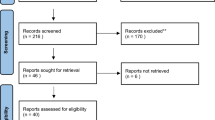Abstract
[Purpose/Significance] This paper makes an exploratory study on the competitive intelligence activities in technological innovation, trying to find out the use mode, function and influencing factors of competitive intelligence in technological innovation. [Method/Process] Through literature review, eight research questions are drawn out, and the corresponding interview outline and questionnaire are designed. Field interview and questionnaire survey are carried out on 43 high-tech enterprises in Jiaxing City of China, and descriptive statistical analysis is carried out on the returned questionnaires. [Result/Conclusion] (1) The most frequently used intelligence in technological innovation is direct competitor intelligence, followed by indirect competitor intelligence, and finally potential competitor intelligence. (2) There is no total difference in the use of competitive intelligence between incremental innovation and fundamental innovation, but there are structural differences. (3) The most frequently used competitive intelligence is in the commercialization stage, followed by the creative stage, and finally the development stage. (4) The main way for enterprises to collect competitive intelligence is through direct way, less through indirect way. (5) In technological innovation, enterprises are more concerned about the current state of competitors than the future state (6). The support of competitive intelligence for technological innovation ideas is mainly reflected in effectiveness, followed by feasibility, and finally novelty. (7) The role of competitive intelligence in technological innovation is mainly in improving products, followed by improving the marketing. (8) The main factors affecting competitive intelligence activities in technological innovation are individual factors, followed by organizational factors.
Access this chapter
Tax calculation will be finalised at checkout
Purchases are for personal use only
Similar content being viewed by others
References
Akroush, M.N.: An empirical model of new product development process: phases, antecedents and consequences. Int. J. Bus. Innov. Res. 6(1), 47–75 (2012)
Liu, G., Ko, W.W.J., Ngugi, I., Takeda, S.: Proactive entrepreneurial behaviour, market orientation, and innovation outcomes: a study of small- and medium-sized manufacturing firms in the UK. Eur. J. Mark. 51(11/12), 1980–2001 (2017)
de Waal, G.A., Knott, P.: Patterns and drivers of NPD tool adoption in small high-technology firms. IEEE Trans. Eng. Manag.nt 63(4), 350–361 (2016)
Calantone, R.J., Schmidt, J.B., Song, X.M.: Controllable factors of new product success: a cross-national comparison. Mark. Sci. 15(4), 341–358 (1996)
Bajaj, D.: Exploring market and competitive intelligence research as a source for enhancing innovation capacity. Coll. Q. 18(3), 5 (2015)
Allameh, S.M., Naeini, S.G., Ansari, A., Kianpour, K., Nazari, Z.: Study the effect of competitive intelligence components on creating innovation. Int. J. Manag. Acad. 2(1), 27–35 (2014)
Calantone, R.: An integrative model of the new product development process. J. Prod. Innov. Manag. 5(3), 201–215 (1988)
Cooper, R.: Identifying industrial new product success: project NewProd. Ind. Mark. Manag. 8(2), 124–135 (1979)
Cooper, R.G., Kleinschmidt, E.: New products, what separates winners from losers. J. Prod. Innov. Manag. 4, 169–184 (1987)
Michael Song, X., Parry, M.E.: The R&D-marketing interface in Japanese high-technology firms. J. Prod. Innov. Manag. 9(2), 91–112 (1992)
Tribby, M.E.: Competitive Analysis: The Direct and Indirect. John Wiley & Sons, New Jersey (2013)
Markkanen, S.: Competitor analysis for Feelback Ltd-A base for strategic decision making. Kuopio, Savonia University of Applied Sciences (2012)
Guimaraes, T., Paranjape, K.: Competition intensity as moderator for NPD success. Int. J. Innov. Sci. 11(4), 618–647 (2019)
Murray, R., Millson, I., Wilemon, D.: The impact of changing markets and competition on the NPD speed/market success relationship. Int. J. Innov. Manag. 14(5), 841–870 (2010)
Tadd, W., MingJer, C.: Indirect competition: Strategic considerations. Soc. Sci. Electron. Publishing 27(34), 2774–2779 (2008)
Hart, S.J., Baker, M.J.: The multiple convergent processing model of new product development. Int. Mark. Rev. 11(1), 77–92 (1994)
Zahay, D., Griffin, A., Fredericks, E.: Information use in new product development: An initial exploratory empirical investigation in the chemical industry. J. Prod. Innov. Manag. 28(4), 485–502 (2011)
Franke, N.E., von Hipple, E., Schreier, M.: Finding commercially attractive user innovations: a test of lead user theory. J. Prod. Innov. Manag. 23(4), 301–315 (2006)
Nemutanzhela, P., Iyamu, T.: The impact of competitive intelligence on products and services innovation in organizations. Int. J. Adv. Comput. Sci. Appl. 2(11), 38–44 (2011)
Gawer, A., Cusumano, M.A.: Industry platforms and ecosystem innovation. J. Prod. Innov. Manag. 31(3), 417–433 (2014)
Boniface, O.: Using customer-product competitor analysis as drivers for a business’ reconfiguration and market repositioning. J. Contemporary Manag. 14(1), 385–415 (2017)
Author information
Authors and Affiliations
Editor information
Editors and Affiliations
Rights and permissions
Copyright information
© 2021 Springer Nature Switzerland AG
About this paper
Cite this paper
Zhou, P. (2021). Competitive Intelligence in Technological Innovation: An Exploratory Study. In: Salvendy, G., Wei, J. (eds) Design, Operation and Evaluation of Mobile Communications. HCII 2021. Lecture Notes in Computer Science(), vol 12796. Springer, Cham. https://doi.org/10.1007/978-3-030-77025-9_15
Download citation
DOI: https://doi.org/10.1007/978-3-030-77025-9_15
Published:
Publisher Name: Springer, Cham
Print ISBN: 978-3-030-77024-2
Online ISBN: 978-3-030-77025-9
eBook Packages: Computer ScienceComputer Science (R0)




